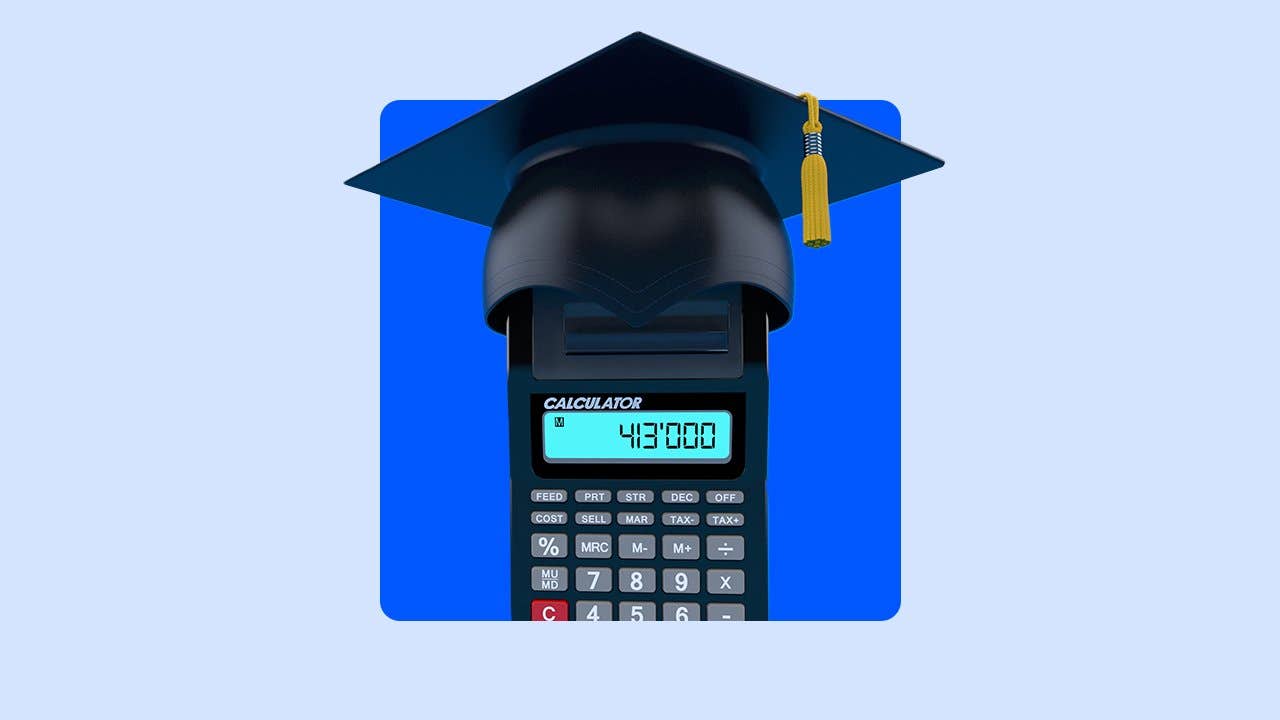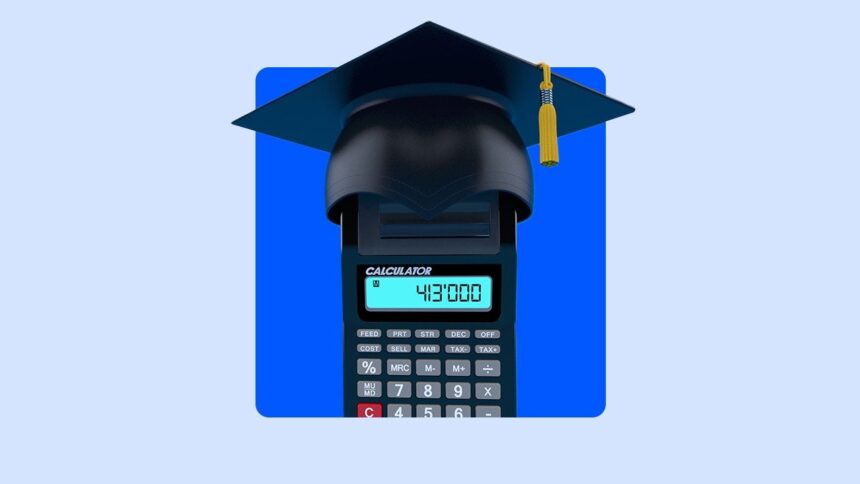
Photo by Getty Images. Illustrations by bankrate
Key takeout
-
Comparing offers and fees can save thousands of people during the life of your loan.
-
Student loan interest can increase your total amount and start to accumulate immediately.
-
Student loan interest may be tax deductible, but the amounts eligible for deductions vary.
Interest is the cost of borrowing money from a financial institution and increases the total amount paid. It is important to compare student loan rates to ensure monthly payments and minimize the overall cost of your loan.
Before taking away student loans to pay for higher education, make sure you understand the impact that you will have on the money you borrow. Pre-calculating student loan interest helps you build an effective budget and prepare for your graduate monthly payments.
Calculating student loan interest
Your interest rate and how often you calculate it will depend on the type of student loan you have. Many of the differences between private and federal student loans, from when interest begins to accrue to whether fees may change, are also factors that affect your loan fees.
Three steps to calculate student loan interest
The process of calculating student loan interest requires three steps:
- Find your daily interest rate: The annual interest rate on student loans is divided by the number of days per year (365).
- Determine your daily profit accrual fee: Multiply the daily interest rate by the outstanding loan balance or principal balance.
- Calculate monthly interest: Multiply the number of days in the billing cycle to your daily interest.
Calculate student loan costs
Use this student loan calculator to find the fees and duration that suit your budget and estimate how your monthly payments will be.
Crunch the numbers
Examples of calculations
Here’s what the steps might look like in a real-world example: Let’s say you have a $10,000 loan with a 6% interest rate and a 10-year repayment period. You are billed for a 30-day cycle.
- Daily interest rates =Annual Interest Rate/Days in Year = 0.06/365 = 0.000164, or about 0.016% in daily interest
- Daily interest accrued fee =(Daily Interest Rate) (Unpaid Loan Balance) =(0.000164) ($10,000) =Approximately $1.64 in daily interest
- Monthly interest payments = (Daily Interest) (Days in Billing Cycle) = ($1.64) (30) = Approximately $49.20 in total monthly interest
How student loan amortization works
Amortization is the process of repaying a student loan, where each monthly payment is applied to principal and interest. At the beginning of the repayment period, the majority of the loan will be directed towards the interest charged on the loan. As borrowers pay more principal balances, the less interest charged will be, so a small portion of the payment will be directed towards interest.
Three factors that influence student loan interest
Simple interest and compound interest
You can have a student loan Simple or compound interestHowever, most including federal loans are calculated using a simple formula of interest. This equation is basically multiplied by three factors.
- Daily interest rates on student loans
- Unpaid loan balance
- Billing cycle days
Although not very common, some lenders charge compound interest. In other words, you will be charged with the principal with unpaid interest.
Fixed vs variable interest rate
Federal student loans have a fixed interest rate, which remains the same throughout the life of the loan. Private loans may have fixed or variable rates. This could increase or decrease based on market conditions.
Subsidies and no subsidies
If student loans are subsidized, you will not be charged interest on the loan while you are at school. If the loan is unsubsidized, interest will be accrued while you are at school. This means that even before you begin paying your loan in full, you can balance it out better than what you borrowed. Private student loans are generally not without subsidies, but federal loans cannot subsidize grants or grants.
3 Tips for Paying Student Loan Interest
There are several strategies to pay less than paying student loans by ensuring low interest rates from the start, changing rates later, or reducing principal balances faster.
Conclusion
If you’re there I’m considering borrowing money for my school,The next step is to shop to find the best student loans for you. Comparing offers and fees is an important step before applying for a loan to ensure you get the best conditions and interest rates.
You can use a student loan calculator to estimate the time it takes to repay your desired loan, calculate student loan interest, and get estimated monthly payments to budget accordingly.


